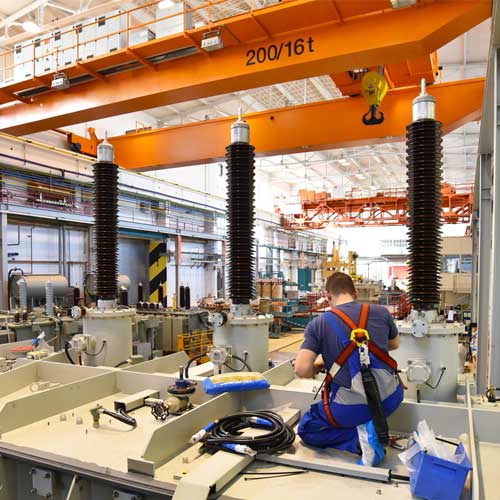
by The HLH Team
Both patients and staff need to wait, and both waste money when they cross the line from normal to excessive. Internal waiting waste costs money in the usual frustrating fashion, but patient waiting waste has different financial consequences.
For clinics, patient waiting waste is akin to defect waste. They walk away with a bad feeling about their experience, which then trickles into eroding, long-term reputational damage that you may not notice until it’s a real problem.
Waiting and more Waiting:
 Clinics and waiting waste are like Jekyll and Hyde: you often can’t have one without the other. Patients’ top complaints are often about waiting, whether that’s in the waiting room or waiting for test results.
Clinics and waiting waste are like Jekyll and Hyde: you often can’t have one without the other. Patients’ top complaints are often about waiting, whether that’s in the waiting room or waiting for test results.
Waiting is inevitable, but you can help take the edge off. On top of the usual talk shows and magazines that no one wants to touch, how about some mobile games offered on your website or social media pages to keep the kids busy? Slightly less stressed-out parents can equal a lot of savings in staff fatigue.
Test Results:
Waiting for test results can be excruciating. Many clinics have, largely due to workload, quietly adopted a “no news is good news” approach, and sometimes don’t call patients even when the results are positive.
Unfortunately, this leaves some patients waiting for excessive amounts of time for a call that may never come. The sound of good news not being passed on and bad news being forgotten about is the same: silence.
Give your patients the heads up about your policy for test results in person. Make sure you’re on the same page about how long it will take, and that they have a number to call with any questions. Patients sitting and stewing about test results are more likely to spread negative word-of-mouth about your clinic.
No Shows:
When a patient doesn’t show up to an appointment, it shifts waiting waste to the clinic employees and wastes the resources spent in booking and preparing for that patient to arrive. Personal emergencies happen, and you can’t eliminate every no-show, but today’s technology makes it easier to reduce the percentage.
 If you’re not already making a phone call 1-2 days in advance, consider starting. Preferably not using an automated message, which sets an impersonal tone from the start.
If you’re not already making a phone call 1-2 days in advance, consider starting. Preferably not using an automated message, which sets an impersonal tone from the start.
Technology, and the expectations for it, are changing quickly. When you call, many are unlikely to pick up an unknown number. When it goes to voicemail, a growing percentage of people (especially younger generations), simply won’t check it.
How about automated texting to confirm appointments? If someone can’t make it, they have the opportunity to simply text a code back to cancel and you’re not left waiting. The call is important, but for those who can’t be bothered to pick up, check their message, or call back, texting is a great “when-in-rome” solution.
Predictable Timings:
Patients’ waiting gets all the press, but staff do their share, as well. Sometimes internal waiting waste is a result of staff waiting around because they’re trying to reduce patient wait times by making themselves accessible.
How long do your processes take? Administering a flu shot or removing a wart take, with a certain variation based on patient chattiness and other causes, a predictable amount of time.
Healthcare professionals juggle tasks all day. Make sure everyone is on the same page about how long a task takes so the next staff member to see them is there at the closest reasonable time.

by The HLH Team
A job site is a complex organism, where dozens of interconnected jobs happen in isolation, all towards the same goal. In a perfect world, all elements will happen in their turn, without waiting, the order of construction being passed like a baton. Unfortunately, we don’t live in a perfect world.
Lean thinking is bringing that elusive goal a little closer by attempting to redefine how stakeholders perceive a project and many companies that have adopted the new approach say it’s working.
Coordinate:
You’re building a house, and the plumber has wrapped up. You’re ready to insulate the walls, but the electrician hasn’t shown up for the rough wiring. His last job ran late because the plumber was late, and so on.
Meanwhile, those waiting end up looking for “busy” work while you watch the hours, and your deadlines, tick away. This kind of Waste – a natural extension of what happens when different stakeholders come together, but still only think about themselves – is rampant across the industry.
Instead of just setting a time and place, take the time to designate a specific location and several methods of contact with each other in case one person is late. It’s common courtesy that can save the business money, too.
Phone Tag:
 In the midst of construction chaos, meetings need to happen. Frequently. Inspectors meet with construction managers, foremen meet with crews, etc. If there’s not enough lead time to properly coordinate these meetings, thumb twiddling of the worst kind commences. Plan accordingly for all meetings and prevent Waiting Waste before it arises.
In the midst of construction chaos, meetings need to happen. Frequently. Inspectors meet with construction managers, foremen meet with crews, etc. If there’s not enough lead time to properly coordinate these meetings, thumb twiddling of the worst kind commences. Plan accordingly for all meetings and prevent Waiting Waste before it arises.
Manager’s Role:
If a worker doesn’t clearly understand the expectations, timelines, and procedures, they may hesitate and not get that small sliver of the project done on time. That slight delay has the potential to ripple down an interconnected job site, causing significant Waiting Waste.
The decision not to take 10 minutes to meet with our crew is usually costly. A morning touch point, and another throughout the day, if needed, is vital to keeping people on track and balancing workflow across the site.
It’s also important that the Manager be accessible and making timely decisions. When a crew or subcontractor needs an answer and gets voicemail, they’ll either wait for someone to get back to them or (worse) keep going, not sure of the answer.
Lean Thinking:
One of the key goals of Lean Construction is to change the perception of project stakeholders. Traditionally, everyone is motivated to do their best for their portion of the job, but often have little investment in the project as a whole. Lean asks us to consider the entire value of a project, looking beyond its many separate parts. In doing so, stakeholders will hopefully begin to see themselves as part of a larger process. At that point, their task list becomes a list of their commitments to the project, and they feel more accountable.
Process Improvement strives to add value while, and by, removing waste. Lean Construction puts the value on the customer as paramount, and bases the success of the project by that metric more than hours under deadline or other traditional metrics. The goal is that, if everyone prioritizes adding value, Wastes that arise from a lack of integration with other construction partners, like Waiting, will erode organically.

by The HLH Team
This Waste is about saving a few seconds per process, then multiplying that by the thousands of processes you do in a given period. It’s incremental, highly detail-oriented, and adds up quickly.
The Invisible Waste:
We’re used to looking for movement and action, waiting is often invisible because it’s the lack of either; it’s inaction that’s often built into the fabric of our everyday processes. If you’re not explicitly watching for Waiting Waste, your eyes will look right through it.
Much like Motion, the more times you repeat a process, the more valuable it is to tighten it by a minute, or even a few seconds. Start with your most repeated processes first and look specifically for Waiting Wastes (otherwise, you’ll miss them).
Waiting within Process:
 This is rampant on most production floors. No matter the product, every step in the manufacturing process builds cumulatively on the steps before, often incorporating more materials to add value. If the materials aren’t available, the process stops. Then, every step after it stops. The earlier in the process it happens, the more disruptive it tends to be.
This is rampant on most production floors. No matter the product, every step in the manufacturing process builds cumulatively on the steps before, often incorporating more materials to add value. If the materials aren’t available, the process stops. Then, every step after it stops. The earlier in the process it happens, the more disruptive it tends to be.
Often it happens when an earlier process is faster than a subsequent one, causing a backlog. This can be the hardest to spot, especially if you have good people.
Faced with waiting, a strong employee won’t just stand there. He or she will get busy. If you’re walking by, you won’t notice irregularities because everyone is moving and working, but “busy work” isn’t productive, and it’s not sustainable. Change can’t come from your office chair. You need to learn the processes intimately and your staff must trust you enough to feel empowered to speak up when they have nothing to do. Once you know about the in-process Wastes, it’s often easy to shift timings around to fill them.
Waiting for Materials:
Fixing a Deadly Waste is like taking a pill: sometimes there are side effects. If you’re suffering from rampant over-inventory of raw materials, you’re probably never stuck waiting for it. If you trim that Waste and stay close to the rocks, it becomes a game of polishing logistics.
Lean manufacturing has very little raw material at hand. If a shipment is late, backordered, shipwrecked, etc., your entire production could halt. This has become a stumbling block for some Lean companies, including Toyota itself, but is all a part of the learning process and shouldn’t be feared.
Machine Downtime:
 We’ve all been there and it’s infuriating. It reminds us that while we can trim some expenses, maintenance can’t be one of them.
We’ve all been there and it’s infuriating. It reminds us that while we can trim some expenses, maintenance can’t be one of them.
Whether it’s a fleet of trucks or a lathe, invest the money to put your critical equipment on a regular, and arguably generous, maintenance schedule. At first, it may seem like a good idea to cut the mechanic without notice, but when forklifts fail and people are dismantling pallets to carry goods by hand, Waste adds up fast.
Regular maintenance also extends equipment life. Once a vehicle or machine is purchased, it is almost immediately written off, so the longer it lasts, the better.

by The HLH Team
In Manufacturing, overproduction is a potentially paralyzing waste that happens when too many widgets roll off the line. In a clinic, care is the product. But too much of it, or wrong administration, can yield massive resources waste.
Tests, Tests, and more Tests:
When a doctor decides to order a patient test, it’s because he or she feels that a piece of the overall puzzle is missing. This is usually a gut feeling.
Overproduction happens when more resources are spent on tests than what the patient needs. Here’s what that looks like:
- Ordering tests that offer no valuable insight into the patient’s condition and are thus unnecessary
- High cost tests when less expensive tests would yield the same answers for that patient
- Extra diagnostic testing in order to insulate against potential claims of malpractice, often in relation to a difficult patient
Drugs:
 Doctors write dozens of prescriptions a day for a wide array of drugs. The balancing act here is to provide the amount required for appropriate care, but no more.
Doctors write dozens of prescriptions a day for a wide array of drugs. The balancing act here is to provide the amount required for appropriate care, but no more.
Chronic overuse of antibiotics over decades has resulted in deeply-rooted health issues, like emergent superbugs. Sometimes it’s habit to prescribe antibiotics for illnesses that will pass on their own.
It can be difficult, especially when a patient books an appointment looking for the pills, to leave it at bedrest. Often in healthcare overproduction, the patient is the driving force, asking for more than he or she needs, which puts the doctor in the unenviable position of having to take time to educate when other patients are waiting.
Other questions to consider when prescribing:
- Does the patient need the brand name, or will the generic have the same effect? If the patients asks for the brand name, what should the doctor’s role (if any) be in education?
- A lot of patients don’t respond favourably to the first drug tried. What dosage are you prescribing at the beginning, and is it going to waste?
Staffing:
Wastes overlap in every industry. In a clinic, over-processed tasks, whether at the front desk or with patients, could result in your clinic being unnecessarily over-staffed.
Every industry grapples with staffing levels. If yours are bugging you, focus on the internal processes your team performs many times a day. If your peak staffing levels are at slow patient times, there’s a lot of non-patient involved over-processing happening.
Defensive Medicine:
Defensive medicine is on the rise, and overproduction waste is rising with it. More patients are marching in with “WebMD” diagnoses in-hand, looking to inform rather than dialoguing with doctors. Often they demand certain medications, tests, or procedures that they think they need, and it falls to the doctor to try reasoning with them, while attempting to assess their condition objectively.
It’s called “defensive” because patients, sometimes with threats (implied or otherwise) of publicity or legal action, are on the offensive. It can sap doctor morale, waste resources, and decrease overall patient value across the system. It’s also a fairly new cause of overproduction, with a largely unclear trajectory.

by The HLH Team
Overproduction is a comfort Waste. When we want to be well prepared for pending orders, it happens.
Just in Time:
There are 2 ways of dealing with customer demand: “the push” and “the pull”. When we push fabrication of components, it’s usually in anticipation of orders that haven’t arrived yet. We’re the active agent, and push out inventory to pile up at the other end, waiting to be scooped up.
We’re comfortable with pushing. It’s a great feeling to tell a pending customer that “we’re ready to start now” and “have materials standing by,” but what happens when things change?
Pull production, also called “Just-in-Time” (JIT), is living close to the rocks. It requires a fine-tuned logistics and production system because we’re not making components ahead of time. They’re made when the orders come in.
When formal customer demand pulls production across the assembly line and onto the construction site, we stay nimble, cash-rich, and Lean.
The Pitfalls:
If it were easy, or felt natural, to fight the Deadly Wastes, we wouldn’t be talking about them. They plague us because fighting them is hard and usually outside our comfort zone.
It’s instinctual to prepare. When the shelves are bare and we’re waiting for the phone to ring, we want to gather our nuts together because our instinct tell us that will save time. But here’s what happens:
- Design Changes: Many construction components are highly specific to the job, and trends shift quickly. If you overproduce your most popular model, the next customers may want design alterations, making those components obsolete.
- Storage: Once you produce it, you have to store it. It’s up to you whether to pay for indoor storage or watch the materials deteriorate in the elements.
- Cash: Overproduction is Inventory Waste’s more dangerous cousin. It freezes all the cash you use to produce, leaving you unable to use it until an order thaws it out. Until that happens, you lose the opportunities that being nimble with cash provides.
Estimating Jobs:
 It’s your job to know, within a certain percentage, how many materials you need for a job. Your first deliveries are often from a larger supplier that you have a good relationship with, so naturally you’ll want to get as much from them as possible.
It’s your job to know, within a certain percentage, how many materials you need for a job. Your first deliveries are often from a larger supplier that you have a good relationship with, so naturally you’ll want to get as much from them as possible.
Material Waste, shrinkage, theft and other unknowns are the wild card. You can either order more than you probably need initially, or only what you know you’ll need, expecting to have to make a few trips to the local supplier.
Stay uncomfortable. Ending a job with surplus material means extra handling, extra transportation, and/or extra storage if you can’t use it right away.
Keep Inventory:
Reducing Waste often involves tasks that feel wasteful in themselves. Take the time to document the materials delivered to your site. It doesn’t take as long as you think; consolidate the bills into one running spreadsheet.
Empower your crew foremen to keep track of what they use, marking it on the spreadsheet periodically. (This will also have the added spin-off of making them aware of the efficiency of their own consumption.) With this tracker, you’ll have a better idea of what materials you’re actually using, so you’re less likely to swing blind next time. It will also inform you of what should be left over (if anything), and you’ll be able to see at a glance what you can move to another site to avoid purchasing there.

by The HLH Team
Overproduction is what happens when idealism runs amuck. You have the orders coming in, and see no reason why they shouldn’t keep coming in and increasing, so you charge full-speed ahead.
Our hubris swells watching our finished widgets roll off the line. So much so, that it becomes easy to forget that sometimes they aren’t sold yet, and their production is a leap of faith. A leap that could, should customers not come through, leave you without a parachute.
This is the king of the Deadly Wastes. It’s the most dangerous. It not only ties up your cash flow, but makes you vulnerable to market changes, leaving you blind to other Wastes happening around you. When we’re overproducing, it’s harder to keep a rational distance to see other Wastes eroding your bottom line.
Just-in-Time:
It’s a prevailing myth that it costs more to shut down an assembly line than to just keep producing. This is the deceitful heart of Overproduction. In Lean manufacturing, if you don’t have the orders, you don’t make the widgets. Period.

Just-in-Time (JIT) is a key pillar of Lean and, for businesses serious about cutting costs, a central goal. It’s elegantly simple:
- You carry just enough inventory to cover the bare minimum of expected orders;
- Build flexibility into your supply logistics; and
- When you get the order, you make the widgets. No more, no less.
JIT operates on a “pull” philosophy: the customer’s order pulls the product through the assembly line for delivery. Overproduction is the opposite: we push the product through the assembly line to pile up in hopes that if we build it, the customers will come.
Inventory:
Overproduction doesn’t act alone, it spawns over-inventory. Together, these two Wastes cripple your cash flow, clog your aisles with unsold product, and keep you anxiously wondering how to get rid of it all.
Batch Sizes:
We overproduce for many reasons and it may be the result of another pernicious myth: that larger batch sizes are always better. Here’s how it works:
- You get too much raw material, and you want to practice efficiency by not storing it. So you pump a ton of money into producing it all, regardless of the orders you have.
- Bigger batches automatically mean saving money (keeping your machines running means you won’t waste time starting them up again), so everything goes into production!
- The product will definitely sell: why wouldn’t it?
This is how a desire for efficiency leads to massive Waste. It happens over and over, and the cycle needs to stop if businesses want to take control of their production again.
Shelf Life:
How long can you sell your product at full price? Once it’s stacked up on those back shelves, its value plummets like driving a car off the lot.
When you can predict obsolescence, like milk expiring, then you can build it into your production process and manage it. But technology, customer expectations, competitors’ tactics, and more can change rapidly and unexpectedly.
With a warehouse full of Overproduction, you forfeit your ability to adapt to market conditions. Instead of being proactive to changes, the value of your outdated product becomes a victim and you’ll have no choice but to discount or discard, the paralysis that Overproduction inflicts.


 Clinics and waiting waste are like Jekyll and Hyde: you often can’t have one without the other. Patients’ top complaints are often about waiting, whether that’s in the waiting room or waiting for test results.
Clinics and waiting waste are like Jekyll and Hyde: you often can’t have one without the other. Patients’ top complaints are often about waiting, whether that’s in the waiting room or waiting for test results. If you’re not already making a phone call 1-2 days in advance, consider starting. Preferably not using an automated message, which sets an impersonal tone from the start.
If you’re not already making a phone call 1-2 days in advance, consider starting. Preferably not using an automated message, which sets an impersonal tone from the start.

 In the midst of construction chaos, meetings need to happen. Frequently. Inspectors meet with construction managers, foremen meet with crews, etc. If there’s not enough lead time to properly coordinate these meetings, thumb twiddling of the worst kind commences. Plan accordingly for all meetings and prevent Waiting Waste before it arises.
In the midst of construction chaos, meetings need to happen. Frequently. Inspectors meet with construction managers, foremen meet with crews, etc. If there’s not enough lead time to properly coordinate these meetings, thumb twiddling of the worst kind commences. Plan accordingly for all meetings and prevent Waiting Waste before it arises.
 This is rampant on most production floors. No matter the product, every step in the manufacturing process builds cumulatively on the steps before, often incorporating more materials to add value. If the materials aren’t available, the process stops. Then, every step after it stops. The earlier in the process it happens, the more disruptive it tends to be.
This is rampant on most production floors. No matter the product, every step in the manufacturing process builds cumulatively on the steps before, often incorporating more materials to add value. If the materials aren’t available, the process stops. Then, every step after it stops. The earlier in the process it happens, the more disruptive it tends to be. We’ve all been there and it’s infuriating. It reminds us that while we can trim some expenses, maintenance can’t be one of them.
We’ve all been there and it’s infuriating. It reminds us that while we can trim some expenses, maintenance can’t be one of them.
 Doctors write dozens of prescriptions a day for a wide array of drugs. The balancing act here is to provide the amount required for appropriate care, but no more.
Doctors write dozens of prescriptions a day for a wide array of drugs. The balancing act here is to provide the amount required for appropriate care, but no more.
 It’s your job to know, within a certain percentage, how many materials you need for a job. Your first deliveries are often from a larger supplier that you have a good relationship with, so naturally you’ll want to get as much from them as possible.
It’s your job to know, within a certain percentage, how many materials you need for a job. Your first deliveries are often from a larger supplier that you have a good relationship with, so naturally you’ll want to get as much from them as possible.





